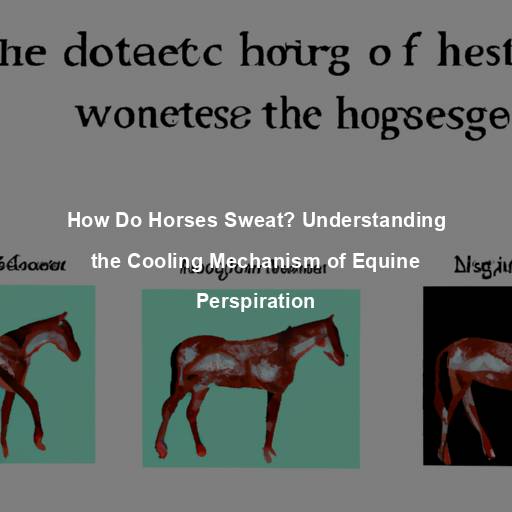Are Horses Used for Glue?
Last Updated on October 20, 2023 by Evan
Contents
- 1 The History and Utilization of Horses
- 2 Animal Welfare and Ethical Considerations
- 3 Common Misconceptions and the Importance of Education
- 4 The Evolution of Glue Production
- 5 Ethical Considerations in Animal Product Industries
- 6 The Importance of Education and Awareness
- 7 Celebrating the Bond with Horses
- 8 FAQs: Are Horses Used for Glue?
- 8.1 Q: Are horses still used for making glue?
- 8.2 Q: How were horses used in the glue-making process?
- 8.3 Q: What are the alternatives to horse-based glue?
- 8.4 Q: Are any regulations in place to protect horses from being used in glue production?
- 8.5 Q: Can horses contribute to the production of other products?
- 8.6 Q: Is it true that horse glue was widely used in the past?
- 8.7 Q: Are there any historical uses of horse-based glue that still remain today?
The History and Utilization of Horses
For ages, horses have weaved themselves into the colorful tapestry of human existence, lending their grace and strength to our endeavors. Whether it be as steadfast steeds, tireless farmhands, or even as nourishment in times of scarcity, these majestic creatures have left an indelible mark on our collective consciousness. However, amidst the tales of their tireless toil and unwavering loyalty, an enigma communes – are horses truly utilized for the production of glue? To unravel this curious riddle, we must voyage through the annals of history and explore the intricate web of horse utilization.
The Glue-Making Process
Before we explore the role of horses in glue production, it’s essential to understand the glue-making process itself. Traditional glue is derived from animal collagen, which is a protein found in the connective tissues of animals. To create glue, these tissues are boiled down, resulting in a gelatinous substance that can be used as an adhesive.
Horses and Glue Production: The Historical Context
Throughout history, horses have served humanity in various industries, including transportation and agriculture. In the 18th and 19th centuries, these majestic creatures often faced grueling working conditions. Sadly, when their time on Earth came to an end, their remains were repurposed to extract collagen for the production of glue. It is vital to understand this historical context when reflecting on the role horses played in the glue-making process.
Modern Glue Industry: A Shift in Source
It may come as a surprise, but the glue industry has experienced a significant shift away from its reliance on horses for collagen. With the changing tides of societal attitudes towards animal welfare, manufacturers have embraced more ethical practices in glue production. Nowadays, the primary sources for commercial glue production include cattle hides and bones, pigskins, and even fish byproducts. The industry’s transformation reflects a commitment to sustainable sourcing and a departure from traditional methods that may have perplexed many.
Animal Byproducts in Glue Production
While horses are not the primary source of collagen for glue production, it is important to note that various animal byproducts are still utilized in the industry. These byproducts include bones, tendons, and hides from animals raised for meat consumption. Rather than focusing solely on horses, it is more accurate to acknowledge that glue production involves the utilization of a wide range of animal-derived materials.
Animal Welfare and Ethical Considerations
Horses as Companion Animals
Horses have an undeniable hold on our emotions, captivating us as cherished partners in life’s journey. Their very presence brings solace, be it through offering solace in times of need, lending an empathetic ear, or even aiding in the healing process for those grappling with physical or psychological tribulations. However, it is disconcerting when misconceptions take root, falsely asserting horses as mere vessels for glue fabrication, overshadowing their true significance.
The Equine Industry’s Responsibility
The equine industry has a responsibility to ensure the welfare of horses throughout their lives, regardless of their purpose. Today, horses are primarily utilized for recreational activities, competitive sports, and as therapy animals. Organizations and governing bodies within the industry have implemented stringent regulations to safeguard the well-being of these majestic creatures.
Ethical Sourcing of Animal Byproducts
In a world where animal welfare is increasingly in focus, it becomes paramount to rally behind companies that prioritize ethical sourcing of animal byproducts. The glue industry, much like its counterparts, has embraced the challenge and made commendable progress in adopting sustainable and responsible practices. By sourcing materials from animals already raised for meat consumption, this industry is effectively reducing waste and optimizing resource utilization. It’s a small step towards a more compassionate and conscientious future.
Common Misconceptions and the Importance of Education
Addressing Misinformation
There seems to be a common misunderstanding swirling around about horses and their association with glue production. It’s perplexing how this misconception continues to persist, rooted in a profound lack of awareness and a failure to comprehend the evolution of the glue industry. It’s high time we debunk these myths and shed light on the ethical practices employed by the glue industry, enlightening the public about the variety of sources that contribute to glue production, beyond just horses.
Promoting Transparency and Accountability
In the realm of glue production, fostering an environment of transparency and accountability holds utmost importance. It is imperative for companies to proactively communicate their sourcing practices, shedding light on the intricacies that guide their operations. By accentuating their unwavering dedication to animal welfare, they not only dispel misconceptions but also foster a resolute bond of trust with discerning consumers who seek assurance in the provenance and ethicality of the products they choose to embrace.
Educating the Public
In our ever-evolving society, education becomes the guiding light that unravels the tangled web of misunderstandings and illuminates the path to a more enlightened community. With the glue industry at its core, we embark on a quest to unravel the intricate tapestry of collagen’s origins, a substance so deeply entwined with our animal counterparts. By delving into the nooks and crannies of this relationship, we aim to shed light on the enigmatic bond between animals and the products derived from them, leaving no stone unturned in our pursuit of knowledge.
Horses in Transportation and Agriculture
While the historical use of horses in glue production is a part of their past, it is important to acknowledge the multitude of other roles these magnificent animals have played throughout history. Horses have been integral to transportation, enabling humans to traverse long distances more efficiently. They have also been crucial in agricultural settings, aiding in plowing fields, pulling carts, and transporting goods.
Equestrian Sports and Recreation
In today’s fast-paced world, the allure of horses in various equestrian endeavors cannot be denied. From the elegant finesse of dressage to the adrenaline-fueled thrill of show jumping and rodeo spectacles, these majestic creatures have effortlessly carved out a unique niche in the hearts of passionate devotees and onlookers. Their sheer might and nimbleness embody the perfect fusion of power and poise, providing a gateway for individuals to seek solace, unleash their inner prowess, and forge unbreakable bonds in the pursuit of physical and emotional gratification.
Therapy and Emotional Support Animals
The world has come to acknowledge the incredible therapeutic wonders that lie within the majestic realm of horses. Awe-inspiring equine-assisted therapy stands as a testament to the remarkable power it holds for individuals grappling with physical, emotional, and cognitive battles. The enigmatic connection shared between humans and these magnificent creatures has the astonishing capacity to nurture wounds, enhance the art of communication, and ignite self-assurance. Moreover, horses have been sought after as loving emotional allies, bestowing solace and unyielding companionship upon those yearning for solace.
The Evolution of Glue Production
Modern Glue Manufacturing Processes
In the ever-evolving realm of adhesive innovation, the glue industry has witnessed a mesmerizing metamorphosis. Powered by cutting-edge technology and an unwavering commitment to a greener future, a captivating concoction of revolutionary manufacturing techniques has propelled the industry to new heights. Embracing synthetic glues, forged from the essence of petroleum-based products, has emerged as a prevailing choice, championing versatility and taming the wild beast that is cost-effectiveness. In this enigmatic landscape of boundless possibilities, the adhesive world continues to perplex and surprise, leaving us spellbound by the breathtaking adhesive tapestry it weaves.
Animal-Derived Glues: A Niche Market
Although horses are no longer the primary source of collagen for glue production, there is still a niche market for animal-derived glues. Some artisans and craftsmen may opt for traditional glues made from animal collagen due to their unique properties, such as slow drying times and reversible bonds. However, it is crucial to note that these glues are not mass-produced on a large scale.
Ethical Considerations in Animal Product Industries
Animal Welfare and Industry Standards
In a world where the treatment of animals across various industries remains a burning issue, the call for transparency and accountability has never been louder. As consumers become more conscientious about the products they choose, industries like the glue industry are making strides to adopt stringent animal welfare standards and certifications. These measures not only address the concerns surrounding responsible sourcing but also reflect an evolving mindset that values the well-being of animals. By embracing these changes, companies are taking a step towards a more ethical future.
Balancing Sustainability and Consumption
In the ever-evolving landscape of conscious consumerism, there lies a perplexing quandary of equilibrium between sustainability and consumption. Amidst this perplexity, lies an imperative need to tread the path of responsible resource utilization, particularly when it comes to animal byproducts. An ethos of minimal waste coupled with maximized resource utilization mandates the conscientious integration of animal byproducts, like hides and bones, into vital domains such as glue production. By intertwining these sustainable practices with the intricacies of meat consumption, we can forge ahead into a more harmonious future of resource management.
Supporting Ethical and Sustainable Practices
As consumers, we have the power to support companies that prioritize ethical and sustainable practices. By choosing products that adhere to rigorous animal welfare standards and promote responsible sourcing, we can contribute to the overall well-being of animals and encourage positive change within industries.
The Importance of Education and Awareness
Dispelling Myths and Misconceptions
In our ever-evolving world, understanding the truth behind the use of animals in different industries is crucial. By shedding light on accurate information and debunking wide-spread misconceptions, we aim to cultivate a society that is knowledgeable and empathetic. Education and awareness serve as the powerful guides in unraveling the complexity surrounding this topic, leading us towards a more compassionate tomorrow.
Promoting Alternatives and Innovation
The incredible strides made in technology and research are revolutionizing the realm of glues, as innovative alternatives to animal-derived ones emerge. These cutting-edge bio-based glues, crafted from plant-based materials or even sourced from microbial wonders, are gaining much-deserved attention for their sustainability. Embracing and championing these alternatives is not only a nod towards environmental responsibility, but also a transformative step in reducing our dependency on animal byproducts in the glue manufacturing process. It’s a perplexing time of choices and possibilities, where the traditional is being challenged by the remarkable burst of bio-based options.
Encouraging Dialogue and Collaboration
In this dynamic era of ever-evolving perspectives, fostering a harmonious exchange of ideas among industry mavens, animal champions, and discerning consumers paves the precarious path towards transformative progress. Through concerted efforts of embracing honest dialogues on ethical conduct, bolstering movements that revere the sanctity of animal well-being, and ardently demanding unclouded transparency, we, as a united front, have the unparalleled potential to forge a future that is both ecologically sound and empathetically infused. Together, let us embark upon this invigorating voyage towards a sustainable domain, where compassion reigns supreme.
Celebrating the Bond with Horses
While the historical association between horses and glue production lingers in popular culture, it is important to recognize the diverse roles horses play in our lives today. From being cherished companions and athletes to serving as therapy animals, horses continue to captivate our hearts and enrich our lives in countless ways.
In this ever-evolving world of animal product industries, the enigmatic realm of glue production poses intriguing challenges and begs for our utmost attention. As perplexing as it may be, we must continually educate ourselves and make thoughtful decisions that reflect our personal values. Together, let us embark on an exhilarating journey where we celebrate the profound bond between humans and horses, champion ethical practices, and embrace the boundless realms of innovation. By daring to explore the uncharted territories, we can hope to forge a future that seamlessly harmonizes with these majestic creatures.
FAQs: Are Horses Used for Glue?
Q: Are horses still used for making glue?
A: Although historically horses were used in the production of glue, modern glue manufacturing no longer requires the use of horses. Previously, horses were a significant source of collagen, a protein found in their connective tissues, which is a key component in making glue. However, today, the production of glue primarily relies on synthetic materials or other animal by-products.
Q: How were horses used in the glue-making process?
A: In the past, horses were utilized in the glue-making process primarily for their collagen-rich materials, such as hides, hooves, and bones. After slaughtering horses for their meat, these leftover parts were collected and subjected to a series of steps to extract collagen. The collagen was then processed further to create the adhesive properties required for producing glue.
Q: What are the alternatives to horse-based glue?
In our rapidly changing world, the realm of glue production has undergone a captivating metamorphosis, offering a rich tapestry of options that defy the conventional horse-based glue of yesteryears. Pioneering the way, synthetic glues, born from the depths of petroleum-based materials, have proliferated across myriad industries, becoming the darlings of modernity. Yet, not to be outshined, Mother Nature herself has bestowed upon us an array of plant-based glues, crafted delicately from the essence of starch and cellulose, captivating artisans and aficionados alike. Moreover, the pursuit of innovation and technology has taken us on a mesmerizing journey, where the extraordinary materials, proteins from the likes of fish, cows, and even insects, have leapt onto the glue scene, rendering our adhesive landscape dazzlingly perplexing.
Q: Are any regulations in place to protect horses from being used in glue production?
A: Yes, there are strict regulations and laws in place in most countries to protect animals from unnecessary harm in glue production. Animal welfare standards, which prohibit the use of horses in glue-making processes, have become widespread. The majority of glue manufacturers nowadays adhere to these regulations, opting for more ethical and sustainable sources for their materials instead.
Q: Can horses contribute to the production of other products?
A: Absolutely! Horses have long been recognized for their multifaceted contributions. Today, horses are commonly used in various industries and activities, such as equestrian sports, recreational riding, therapy programs, and assistance for people with disabilities. Horses also play a crucial role in agriculture, transportation, and police work in some regions around the world.
Q: Is it true that horse glue was widely used in the past?
It’s fascinating how the world of craftsmanship has evolved over time. Horse-based glue, known for its collagen-rich properties, once played a significant role in various industries such as woodworking and bookbinding. However, as our understanding of animal welfare deepens and technology progresses, the use of this type of glue has gradually faded into the background, making way for more ethical and advanced alternatives. The transformation we witness in the realm of adhesives truly highlights the ever-changing nature of human innovation and compassion.
Q: Are there any historical uses of horse-based glue that still remain today?
A: While the extensive use of horse-based glue has diminished, there may be niche or traditional applications where it is still utilized. Some craftsmen or artisans who specialize in traditional restoration work or historical techniques might occasionally choose horse glue for its specific properties. However, in most mainstream industries and commercial glue production, horse glue is no longer commonly utilized.







